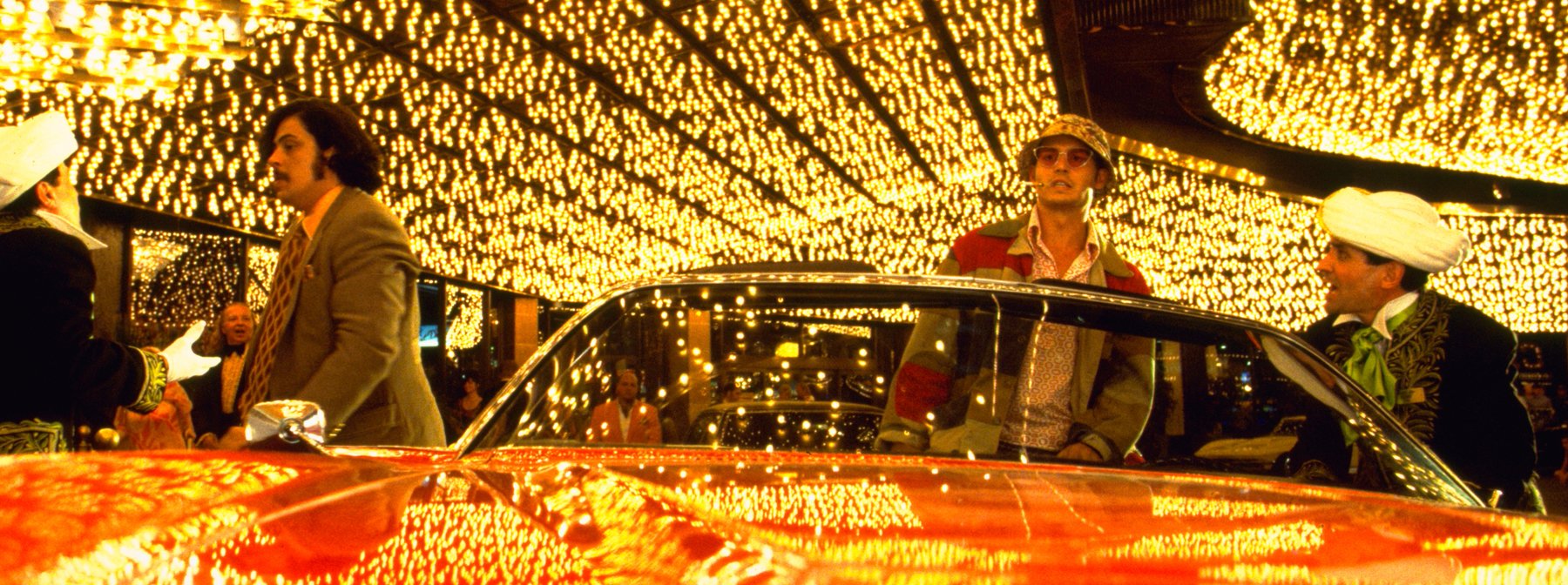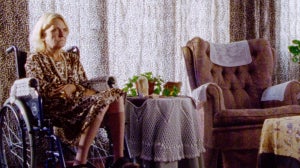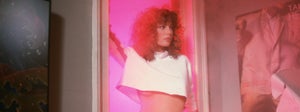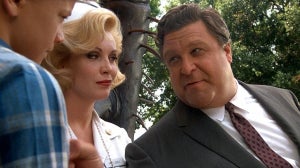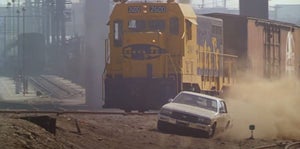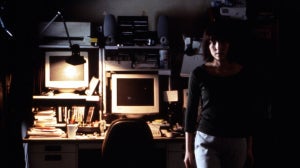
Terry Gilliam is a filmmaker celebrated for his ability to take audiences to fantasy worlds beyond imagination. Whether it be a grand voyage to the moon or a bleak bureaucratic dystopia, the director’s visual style thrives in the realm of fantasy. However, during the 1990s, Gilliam took an uncharacteristic dive into the real world, taking on three Hollywood studio projects as a director-for-hire.
The primary reason for this sharp change in tact was the catastrophe surrounding The Adventures of Baron Munchausen (1988), Gilliam’s then-most ambitious project. A myriad of production issues and woeful financial planning meant that the significantly over-budget Munchausen sank at the box office – no thanks to a quite awful marketing campaign from Columbia Pictures.
Tainted in the eyes of film financiers and tarnished as a rogue, untrustworthy director, Gilliam begrudgingly embraced the Hollywood system as a director-for-hire in an attempt to wash away this unjust reputation. His first project? The Fisher King (1991).
While The Fisher King is far more emotionally complex than Gilliam’s previous projects, there’s hardly another living director better suited to taking an Arthurian legend and realising it in modern-day New York. The film follows the redemption of shock jock Jack Lucas (Jeff Bridges) after an inflammatory on-air comment results in tragedy. Down on his luck and pushed to the brink, Jack falls into the hands of Parry (Robin Williams), a homeless man who’s on a quest to find the holy grail in Manhattan.
The director leaned on Parry’s delusional characterisation when indulging in the film’s modern fantasy, describing his approach as “seeing New York through Parry’s eyes”.[i] Indeed, the more time Jack spends with Parry, the more the Big Apple morphs into a medieval landscape. The homeless encampment location wouldn’t be out of place in Jabberwocky (1977), while several shots emphasise the city’s gothic architecture, notably during Jack’s daring tower climb in the film’s climax.
https://www.youtube.com/watch?v=kyKGLSKXZkw&pp=ygUTZmlzaGVyIGtpbmcgdHJhaWxlcg%3D%3D
The Fisher King’s most apparent Gilliamesque visuals are those featuring the magnificent Red Knight, a reoccurring hallucination summoned by Parry’s PTSD. Brought to life through a striking costume complete with pyrotechnics, the Red Knight contributes to some of Gilliam’s most arresting imagery to date. Seeing this intimidating warrior stride through the streets of New York and the greenery of Central Park is equal parts jarring and thrilling.
However, it’s not all knights and castles as Gilliam also delivers one of New York’s sweetest cinematic moments, the great waltz of Grand Central station. As the lovelorn Parry pursues his heartthrob, Lydia (Amanda Plummer), time grinds to a halt as commuters link arms and dance through the station. An impromptu set piece conceived by Gilliam, the scene marks a beautiful instance of modern fantasy that ushers us away from the bustle of city life to enjoy a moment of urban tranquillity.
After The Fisher King’s critical and commercial success, Gilliam embarked on his next Hollywood redemption project, 12 Monkeys (1995). Conceived and co-written by screenwriting couple David and Janet Peoples, the film follows James Cole (Bruce Willis), a prisoner living in a future where humanity has been driven underground after succumbing to a deadly virus. Cole is tasked with identifying the disease’s origin in the past so that the world might be habitable once more. However, a nagging question lingers, is the future really doomed, or is this all in Cole’s head?
https://www.youtube.com/watch?v=Xwh1xBzsc1Q
Despite its sci-fi premise and part-fantasy setting, 12 Monkeys proves to be Gilliam’s most conventional film. The lion’s share of the narrative is set in the “past” of contemporary Philadelphia and Baltimore, cities through which Gilliam presents a world on the brink. The cold streets are rough, and the faces occupying them even rougher. The future isn’t a far cry from the past; a claustrophobic, Orwellian nightmare in which Cole is subjected to testing, interrogation, and imprisonment. While not the director’s intention, the retro-tech future is undeniably Brazil-esque, with some overt visual nods.
What’s remarkable is how Gilliam perverts even the blandest of environments so that they feel gnarly and cramped. Cole is mistakenly sent back to 1990, early in the film, and confined to a mental institution. Here, angles contort and lenses widen as we’re introduced to Brad Pitt’s keyed-up Jeffrey Goines, a character who epitomises measured insanity. Gilliam forces us to endure uncomfortable aesthetic twists on an otherwise familiar reality, crafting a heavy atmosphere that makes up only one part of this sci-fi classic.
For his final nineties project, Gilliam took on the seemingly impossible and agreed to film an adaptation of Hunter S. Thompson’s 1971 novel “Fear and Loathing in Las Vegas”. A melting pot of drugs, debauchery, and late-sixties idealism, Thompson’s wild Vegas escapades demand a dash of the fantastic in order to be done justice, which Gilliam managed to implement in Fear and Loathing in Las Vegas (1998) expertly.
The Lennon Sisters’ haunting rendition of “My Favourite Things”, accompanied by footage of anti-Vietnam protests, lulls us into Gilliam’s unique vision of America’s Sin City. Raoul Duke (Johnny Depp) and Dr Gonzo (Benicio del Toro) speed their way into Las Vegas, their drug-induced state welcoming them into a neon-splattered hellscape. Thompson’s vivid descriptions of a depraved and corrupt Vegas are put to the screen perfectly, as Gilliam employs all his visual motifs to warp the desert city and its inhabitants. We’re treated to some fantastic practical effects and illusions, as rooms change shape, floors melt, and flagrant gamblers are presented as carnivorous reptiles.
https://www.youtube.com/watch?v=Rx-EsbhLZLQ&pp=ygUXZmVhciBhbmQgbG9hdGhpbmcgYXJyb3c%3D
Fear and Loathing, more than most Gilliam projects, relies on the performances of its actors. The director has always been a collaborative filmmaker, encouraging the creative input of everyone from the set designers to the lighting technicians. With this in mind, Gilliam relies on actors to do what they do best with little direction – act. The flamboyant performances of Robin Williams and Brad Pitt are vital to selling the fantastical realities of The Fisher King and 12Monkeys, respectively, and the case is no different for Depp and del Toro here. The relentless nonsense that pervades Fear and Loathing’s barebones narrative is only made tolerable through the batshit performances of the two leads.
Gilliam has returned to worlds of pure fantasy in recent years, avoiding the Hollywood system whenever possible. However, his nineties oeuvre not only displays his versatility as a filmmaker but also showcases his penchant for magical realism in any given setting. From the streets of Manhattan to the lights of Las Vegas, nowhere is safe from the wonders/horrors of Gilliamification.
[i] “Terry Gilliam” (1991), The South Bank Show, Season 15, Episode 3, ITV

